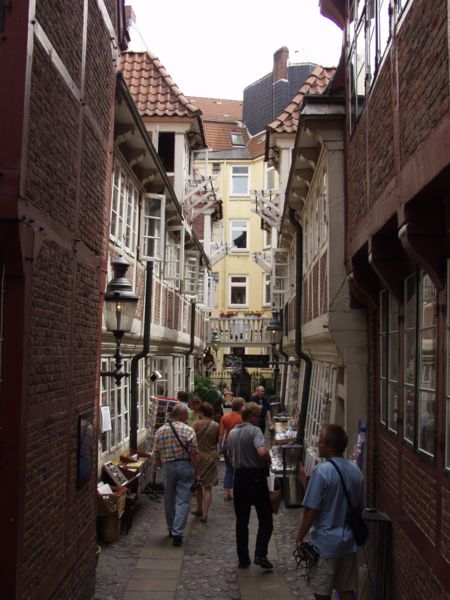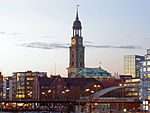Krameramtsstuben
1700 establishments in the Holy Roman Empire17th century in the Holy Roman EmpireBuildings and structures in Hamburg-MitteHouses completed in 1700Museums in Hamburg ... and 2 more
Objects in the Museum for Hamburg HistoryStreets in Hamburg

The Krameramtsstuben (Grocers' Apartments) are historic buildings on Krayenkamp, near St. Michaelis Church in the Neustadt district of Hamburg, Germany. Formerly homes for widows of members of the Grocers’ Institute (Krameramtswohnungen), the 1620 to 1700 built, timber-framed buildings form the last of the 17th century enclosed courtyards of Hamburg. Now occupied by small shops, galleries, restaurants and a museum, the group is arranged along the sides of a narrow courtyard, behind two 1700s buildings which front the street.
Excerpt from the Wikipedia article Krameramtsstuben (License: CC BY-SA 3.0, Authors, Images).Krameramtsstuben
Krayenkamp, Hamburg Neustadt
Geographical coordinates (GPS) Address Website Nearby Places Show on map
Geographical coordinates (GPS)
| Latitude | Longitude |
|---|---|
| N 53.548 ° | E 9.9802 ° |
Address
Antiquariat Reinhold Pabel
Krayenkamp
20459 Hamburg, Neustadt
Germany
Open on Google Maps









